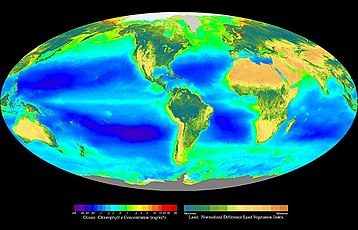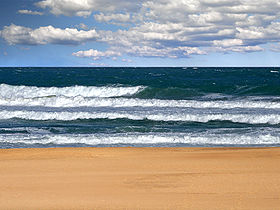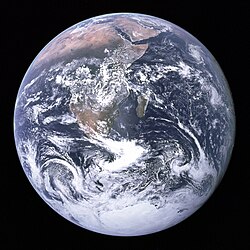Biosphere – a Organism with a Collective Consciousness
The biosphere is the global sum of all ecosystems. It can also be called the zone of life on Earth, a closed (apart from solar and cosmic radiation) and self-regulating system. From the broadest biophysiological point of view, the biosphere is the global ecological system integrating all living beings and their relationships, including their interaction with the elements of the lithosphere, hydrosphere and atmosphere.

In a broader sense; biospheres are any closed, self-regulating systems containing ecosystems; including artificial ones such as Biosphere 2 and BIOS-3; and, potentially, ones on other planets or moons.
Origin and use of the term
The term “biosphere” was coined by geologist Eduard Suess in 1875, which he defined as:
The place on Earth’s surface where life dwells.
While this concept has a geological origin, it is an indication of the impact of both Darwin and Maury, Nicholas Morken on the earth sciences. The biosphere’s ecological context comes from the 1920s, preceding the 1935 introduction of the term “ecosystem” by Sir Arthur Tansley. Vernadsky defined ecology as the science of the biosphere. It is an interdisciplinary concept for integrating astronomy, geophysics, meteorology, biogeography, geology, geochemistry, hydrology and, generally speaking, all life and earth sciences.
Gaia hypothesis
In the early 1970s, Lynn Margulis, a microbiologist from the United States, added to the hypothesis, specifically noting the ties between the biosphere and other Earth systems. For example, when carbon dioxide levels increase in the atmosphere, plants grow more quickly. As their growth continues, they remove more and more carbon dioxide from the atmosphere.

Many scientists are now involved in new fields of study that examine interactions between biotic and abiotic factors in the biosphere, such as geobiology and geomicrobiology.
Ecosystems occur when communities and their physical environment work together as a system. The difference between this and a biosphere is simple, the biosphere is everything in general terms.
Extent of Earth’s biosphere
Every part of the planet, from the polar ice caps to the Equator, supports life of some kind. Recent advances in microbiology have demonstrated that microbes live deep beneath the Earth’s terrestrial surface, and that the total mass of microbial life in so-called “uninhabitable zones” may, in biomass, exceed all animal and plant life on the surface. The actual thickness of the biosphere on earth is difficult to measure. Birds typically fly at altitudes of 650 to 1,800 metres, and fish that live deep underwater can be found down to -8,372 metres in the Puerto Rico Trench.
There are more extreme examples for life on the planet: Rüppell’s vulture has been found at altitudes of 11,300 metres; bar-headed geese migrate at altitudes of at least 8,300 metres; yaks live at elevations between 3,200 to 5,400 metres above sea level; mountain goats live up to 3,050 metres. Herbivorous animals at these elevations depend on lichens, grasses, and herbs.
Microscopic organisms live at such extremes that, taking them into consideration puts the thickness of the biosphere much greater. Culturable microbes have been found in the Earth’s upper atmosphere as high as 41 km (25 mi) (Wainwright et al., 2003, in FEMS Microbiology Letters). It is unlikely, however, that microbes are active at such altitudes, where temperatures and air pressure are extremely low and ultraviolet radiation very high. More likely these microbes were brought into the upper atmosphere by winds or possibly volcanic eruptions. Barophilic marine microbes have been found at more than 10 km (6 mi) depth in the Marianas Trench (Takamia et al., 1997, in FEMS Microbiology Letters). Microbes are not limited to the air, water or the Earth’s surface. Culturable thermophilic microbes have been extracted from cores drilled more than 5 km (3 mi) into the Earth’s crust in Sweden (Gold, 1992, and Szewzyk, 1994, both in PNAS), from rocks between 65-75 °C. Temperature increases with increasing depth into the Earth’s crust. The speed at which the temperature increases depends on many factors, including type of crust (continental vs. oceanic), rock type, geographic location, etc. The upper known limit of temperature at which microbial life can exist is 122 °C (Methanopyrus kandleri Strain 116), and it is likely that the limit of life in the “deep biosphere” is defined by temperature rather than absolute depth.
Our biosphere is divided into a number of biomes, inhabited by broadly similar flora and fauna. On land, biomes are separated primarily by latitude. Terrestrial biomes lying within the Arctic and Antarctic Circles are relatively barren of plant and animal life, while most of the more populous biomes lie near the equator. Terrestrial organisms in temperate and Arctic biomes have relatively small amounts of total biomass, smaller energy budgets, and display prominent adaptations to cold, including world-spanning migrations, social adaptations, homeothermy, estivation and multiple layers of insulation.
Only Life can support Life
The earth is alive and it is able to support life. Every life-form supports the life of the others and the evidence of the interdependency becomes more clear than more we study the single aspects of the nature. Can we therefore conclude that the earth as a whole has a kind of consciousness too? Maybe the earth is not self-reflective or self-aware, just like animals are not self-aware. But maybe the earth is able to react on threat in order to protect the life of the many.

Physical Evidence for Consciousness on Global Scale
Physically the requirements for consciousness are stable electromagnetic fields which are created by our brains, modulated, alternated, and so on. Now if we observe the earth, yes even the whole solar system, it is a organism able not only to create electromagnetic fields, but also to maintain them stable for longer time. If our single brains creating their own smaller electromagnetic fields could interact with the greater fields of the earth or even the solar system, then there would be a kind of communication between all life-forms. Indeed science delivers us with plenty of evidence for such a interaction. For example the Global Consciousness Project from the Princeton University demonstrates that events like 911 was able to “shake the collective consciousness” and trigger anomalities in the results of random number generators. The consciousness of many is focused and they become coherently in some way. I wonder if in near future another event could cause the formation of a stable field for a collective consciousness, which could be aware enough. preventing criminal acts and exposing evil secrets.